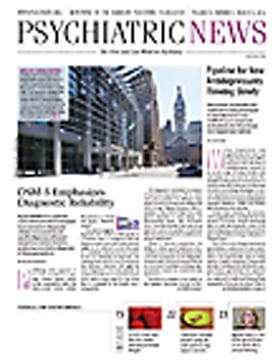Six years ago, a Food and Drug Administration (FDA) committee suggested that some medications for attention-deficit/hyperactivity disorder (ADHD) might warrant a black-box warning, given reports of adverse cardiovascular events including sudden death. The American College of Cardiology recommended at about the same time that physicians administer electrocardiograms before starting patients on psychostimulants.
Now data covering hundreds of thousands of patients and control subjects indicate that for most adults, the drugs do not elevate risk, reported Laurel Habel, Ph.D., and colleagues in the December 28, 2011, Journal of the American Medical Association. Habel is with the Division of Research at Kaiser Permanente Northern California in Oakland. An earlier study by the same research group led to similar findings among young people aged 2 to 24.
The concerns first arose because the ADHD drugs raise blood pressure and heart rate slightly and thus could increase risk of arrhythmias or coronary ischemia in patients with preexisting coronary artery disease or structural heart defects, said John Harold, M.D., of Cedars-Sinai Hospital in Los Angeles and a vice president of the American College of Cardiology, in an interview with Psychiatric News.
Habel and colleagues compared 150,359 current users of these medications aged 25 to 64 with 292,839 nonusers (persons who had not been prescribed an ADHD drug in the previous year), covering 806,182 person-years of follow-up. Data were variably available beginning between 1986 and 2002 and concluded in 2005. The most commonly prescribed ADHD drugs were methylphenidate (45 percent), amphetamines (44 percent), and atomoxetine (8 percent).
During follow-up, participants had 1,357 heart attacks, 296 sudden cardiac deaths, and 575 strokes. After adjustment for several factors, including cardiac risk score (CRS), the relative risk for all three primary outcomes for users versus nonusers was 0.83, with little difference for the different medications.
“For the combined end point, there was no pattern of increasing risk with increasing duration of current use or for any window of time,” wrote the authors. Results were similar when new users were considered separately.
Clinical trials used to gain approval for the drugs are too small to detect such cardiac events, and nonrandom post-marketing surveillance can produce false positives.
“The paper provides reassurance that with appropriate screening, and for approved indications in patients under 65, these drugs are safe in this large patient population,” said Harold.
“The median time on these medications was four months,” said Julie Zito, Ph.D., a professor in the Department of Pharmacy Practice and Science at the University of Maryland School of Pharmacy. “Is that enough exposure to find any adverse effects? I would like to see evidence from longer-exposed cohorts.”
Nevertheless, if prescribers take a careful medical and family history and do a thorough physical exam to exclude structural heart problems, the risk of later cardiac events should be very low, said Harold. “For younger patients, an EKG is not required if there’s no documented heart disease.”
The study did not provide support for recommending routine EKGs prior to initiating ADHD treatment.
Harold advocates shared decisionmaking about the choice and use of ADHD medications, along with follow-up monitoring. He warns patients and families to report any faintness, dizziness, unexplained chest pain, shortness of breath, or palpitations.
Finally, approaches to care other than biological, symptom-specific models should not be ignored, said Zito.
“Nonpharmacological interventions—like bringing the family in for behavioral management training—just don’t get the same attention,” she said.
Many Pediatricians Avoid Subject of Cardiac Risks
A recent survey of 525 pediatricians finds that while most (93 percent) completed a routine history and physical before starting children on stimulant medications for attention-deficit/hyperactivity disorder (ADHD), only 48 percent performed an in-depth cardiac history and physical, and 15 percent ordered an electrocardiogram.
Only 46 percent of the sample talked to patients and their families about cardiac risks associated with stimulant use, noted Laurel Leslie, M.D., M.P.H., an associate professor of medicine and pediatrics at Tufts University School of Medicine, and colleagues in the February Pediatrics.
The study hints at the disparity in clinical practice after years of sometimes conflicting statements on the topic by Food and Drug Administration advisory committees and various medical societies.
About 81 percent of the pediatricians responding to the survey felt that a family’s knowledge of the risk of sudden cardiac death would deter stimulant use, said the authors. “The fact that physicians might not discuss potential risks with families, despite lay media publicity, suggests that, as a field, we are not adequately prepared to discuss these risks in an efficient, negotiated manner,” they said.
Some of these complex issues might be addressed in training or in continuing medical education, suggested Leslie and colleagues.

